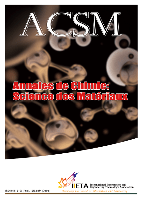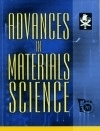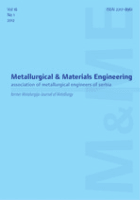
Progress in Rubber Plastics and Recycling Technology
Scope & Guideline
Connecting science and industry for sustainable practices.
Introduction
Aims and Scopes
- Material Characterization and Performance Analysis:
Research on the mechanical, thermal, and rheological properties of rubber and plastic materials, including the development of new composites and blends to enhance performance. - Sustainable Recycling and Waste Management:
Studies focusing on innovative recycling methods for various polymer wastes, promoting circular economy principles and sustainable practices in the plastics and rubber industries. - Biocomposites and Natural Materials:
Exploration of natural fibers and biopolymers in composite materials, emphasizing eco-friendly alternatives and the utilization of renewable resources. - Advanced Processing Techniques:
Investigation of novel processing methods, such as 3D printing and microwave irradiation, to improve the fabrication and properties of polymeric materials. - Optimization of Formulations and Additives:
Research into the optimization of polymer formulations, including the use of fillers, plasticizers, and compatibilizers to enhance material properties.
Trending and Emerging
- Circular Economy Innovations:
A growing emphasis on recycling technologies that contribute to a circular economy, including advanced methods for waste conversion and material recovery. - Biodegradable and Bio-Based Polymers:
Increased research on bioplastics and composites derived from natural materials, reflecting a trend towards sustainable and environmentally friendly alternatives. - Nanotechnology in Polymer Science:
Emerging studies on the incorporation of nanomaterials to enhance the properties of rubber and plastics, showcasing advancements in material science. - Smart Materials and Self-Healing Polymers:
A rising interest in the development of smart materials with self-healing properties, indicating a trend towards innovative solutions in material design. - Additive Manufacturing Techniques:
An uptick in research focusing on 3D printing and other additive manufacturing technologies for polymers, highlighting their potential in custom applications and efficiency.
Declining or Waning
- Traditional Vulcanization Techniques:
Research on conventional sulfur vulcanization methods has decreased, as newer, more efficient techniques and materials are being explored. - Basic Plastic Recycling Methods:
Studies focusing solely on traditional recycling processes without innovative approaches have become less frequent, as the field moves towards advanced and sustainable recycling technologies. - Single Polymer Systems:
There is a noticeable decline in research centered on single polymer systems, as the complexity and performance demands of applications encourage the development of composite materials instead. - Non-Eco-Friendly Materials:
Research on materials that do not align with sustainability goals, such as those involving toxic additives or non-biodegradable components, has seen a reduction in favor of greener alternatives.
Similar Journals

FIBERS AND POLYMERS
Unveiling Breakthroughs in Fiber and Polymer TechnologyFIBERS AND POLYMERS is a prestigious scholarly journal published by the Korean Fiber Society, specializing in the fields of Chemical Engineering, Chemistry, and Polymer Science. Since its inception in 2000, the journal has provided a dynamic platform for researchers and professionals to disseminate cutting-edge findings and innovative methodologies related to fibers, polymers, and their diverse applications. With its Q2 category ranking across multiple disciplines in 2023 and a commendable standing in Scopus rankings—ranking #183 in General Chemistry and #127 in General Chemical Engineering—it is well-regarded within the academic community. The journal’s commitment to quality research is further underscored by its comprehensive coverage of technological advancements and theoretical developments relevant to both industry and academia. Access to published articles may vary, and authors are encouraged to submit original research to contribute to this evolving field. Join the community shaping the future of materials science through FIBERS AND POLYMERS.

JOURNAL OF WUHAN UNIVERSITY OF TECHNOLOGY-MATERIALS SCIENCE EDITION
Exploring the Future of Material CompositionJOURNAL OF WUHAN UNIVERSITY OF TECHNOLOGY-MATERIALS SCIENCE EDITION, published by Wuhan University of Technology, stands as a prominent platform for the dissemination of innovative research in the field of Materials Science. With an ISSN of 1000-2413 and an E-ISSN of 1993-0437, this journal is committed to advancing the understanding of material composition, properties, and applications, contributing to the broader scientific community. Since its inception in 1994, the journal has maintained a steady trajectory of growth, culminating in a Q3 category ranking in Materials Science (miscellaneous) for the year 2023, positioning it within the 33rd percentile of its peers in Scopus rankings. By embracing rigorous peer-review standards and encouraging collaborative scholarship, the journal aims to inspire researchers, professionals, and students alike to explore cutting-edge advancements within the field. Although it does not currently operate under an open access model, its wealth of knowledge remains invaluable for those seeking to deepen their understanding of materials science and its transformative impact across various industries.

ANNALES DE CHIMIE-SCIENCE DES MATERIAUX
Advancing the Frontiers of Materials ChemistryANNALES DE CHIMIE-SCIENCE DES MATERIAUX, published by the International Information & Engineering Technology Association, serves as a significant resource in the field of materials chemistry. With an ISSN of 0151-9107 and an E-ISSN of 1958-5934, this journal has been contributing to the scientific discourse since its inception in 1947. The journal is classified in the Q3 category for Materials Chemistry in 2023, positioning it within the 29th percentile in the Scopus ranking for materials science, underscoring its commitment to advancing knowledge and innovation in this vital area of research. Although currently not an open access publication, the journal welcomes submissions that explore a broad range of topics related to material science, thereby facilitating discussions that can lead to groundbreaking discoveries. Researchers, professionals, and students are encouraged to engage with the journal to stay at the forefront of materials chemistry, especially given its historical context and ongoing relevance in academic and industrial applications.

JOURNAL OF CERAMIC PROCESSING RESEARCH
Exploring New Horizons in Material ScienceJOURNAL OF CERAMIC PROCESSING RESEARCH, published by the Korean Association for Crystal Growth, Inc., serves as a vital source of scholarly communication in the field of ceramics and composites. With an ISSN of 1229-9162, this well-regarded journal aims to advance knowledge through rigorous research and publication of innovative studies that push the boundaries of ceramic processing technologies. Indexed in Scopus and boasting a 2023 Q3 ranking in the ceramics category, it provides a platform for researchers to disseminate their findings and engage with emerging trends in material science. The journal reflects a commitment to contributing to the scientific community, emphasizing the importance of interdisciplinary collaboration and advancements in fabrication techniques. Although it operates under a traditional access model, the journal is a beacon for researchers, professionals, and students, inviting them to explore breakthroughs from the years 2000 through 2024 and beyond.

POLYMER TESTING
Pioneering Research in Polymer Behavior and TestingPOLYMER TESTING is an esteemed academic journal published by Elsevier Science Ltd, focusing on advancements in the field of polymers and their applications. With a high impact factor and category quartiles reflecting its influence, it ranks in the Q1 quartile in both Organic Chemistry and Polymers and Plastics, indicating its crucial role in shaping research in these disciplines. The journal has been open access since 2021, ensuring that cutting-edge research is readily available to researchers, practitioners, and students alike. Covering the convergence of foundational and innovative studies from 1980 and continuing through 2024, POLYMER TESTING appeals to a diverse audience, from materials scientists to chemical engineers, providing a platform for high-quality peer-reviewed articles that advance our understanding of polymer behavior, performance, and applications. If you are looking to stay abreast of the latest trends and breakthroughs in polymer science, POLYMER TESTING is your go-to resource.

Advances in Materials Science
Transforming Ideas into Cutting-edge ApplicationsAdvances in Materials Science, published by SCIENDO, is a pivotal journal in the field of materials science that focuses on the latest developments and breakthroughs in the study and application of innovative materials. With a commitment to advancing knowledge across various sub-disciplines, this journal provides a platform for researchers, professionals, and students to share their findings, explore new methodologies, and discuss the implications of materials science on technology and industry. The journal, indexed under the ISSN 2083-4799 and E-ISSN 2083-4799, promotes open dissemination of research, encouraging a collaborative approach to problem-solving across disciplines. Its emphasis on high-quality, peer-reviewed articles positions it as an influential resource within the academic community, driving forward the boundaries of what is possible in materials science. Advances in Materials Science continues to be an essential read for anyone dedicated to understanding and innovating in the materials domain.

Metallurgical & Materials Engineering
Unlocking innovation in materials engineering.Metallurgical & Materials Engineering, published by Netherlands Press, is a prominent open access journal that has been advancing the field of metallurgical sciences and materials engineering since 2012. With an ISSN of 2217-8961 and an E-ISSN of 2812-9105, this journal provides a vital platform for researchers, professionals, and students to disseminate and access high-quality peer-reviewed research. As of 2023, it holds a Q4 quartile ranking in Mechanical Engineering and a Q3 ranking in Metals and Alloys, according to Scopus. This reflects its ongoing commitment to high standards despite being in a competitive sector. The journal covers a wide array of topics within the scope of materials science, with a focus on metallurgy and alloy technologies, and serves as a crucial resource for those engaged in innovative material development and application. Offering an open-access model emphasizes its dedication to making research widely available, thereby fostering collaboration and advancement in the materials engineering community. Join us in contributing to a dynamic and essential field of study.

Green Materials
Exploring the future of eco-friendly materials.Green Materials, published by Emerald Group Publishing Ltd, serves as a crucial platform for research within the realm of sustainable materials science. Since its inception in 2013, this journal has focused on addressing pressing global challenges, particularly in Materials Chemistry, Pollution, and Polymers and Plastics, as evidenced by its rankings within the Q3 Quartiles. With a commitment to high-quality, peer-reviewed content, it caters to an audience keen on innovative solutions that promote environmental sustainability. Researchers and professionals can access a wealth of knowledge and insights that are instrumental in advancing the field, despite the absence of an open-access option. As the journal continues to converge towards its projected endpoint in 2024, it remains a vital resource for those dedicated to exploring the intersection of materials science and ecological responsibility, ensuring its relevance in academic discussions and practical applications.

MATERIALE PLASTICE
Bridging Disciplines through Materials ScienceMATERIALE PLASTICE is a distinguished academic journal published by REVISTA CHIMIE SRL in Romania, focusing on the fields of Chemistry, Materials Science, and Engineering. With an ISSN of 0025-5289 and an E-ISSN of 2668-8220, this journal has a historical commitment to advancing the study of polymers and plastics since its inception in the early 1970s. Although classified in the Q4 category across multiple disciplines including miscellaneous chemistry and materials chemistry as of 2023, it serves as an important forum for researchers and professionals dedicated to innovative materials research and development. The journal’s resources, though not openly accessible, are pivotal for scholars seeking to deepen their knowledge in the mechanics of materials and interdisciplinary applications. MATERIALE PLASTICE is not only a repository of significant research findings but also a platform for fostering collaboration and discussion among a global audience that continues to strive for scientific excellence in polymer and materials studies.

RUBBER CHEMISTRY AND TECHNOLOGY
Bridging Theory and Practice in Rubber TechnologyRubber Chemistry and Technology is a distinguished journal published by the American Chemical Society, focusing on the vital field of rubber science and technology. With the ISSN 0035-9475 and an E-ISSN of 1943-4804, this journal has provided a platform for scholarly research since its inception in 1970, straddling a rich history of contributions in the area of materials science and polymers. In the most recent assessments, it holds a Q3 ranking in both Materials Chemistry and Polymers and Plastics, indicative of its growing influence and respect in the scientific community. Researchers and professionals benefit from a wide spectrum of topics, including the latest advancements in rubber formulations, processing technologies, and applications across various industries. Although it operates under a traditional subscription model, its commitment to high-quality, peer-reviewed research makes it an essential resource for anyone involved in the cutting-edge study of rubber as a material. Given its ongoing publication and relevance to the field, Rubber Chemistry and Technology remains a cornerstone for professionals and academics eager to explore innovative rubber technologies and their applications.